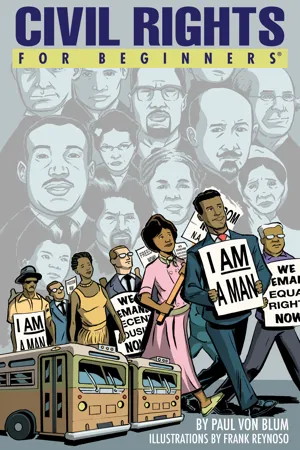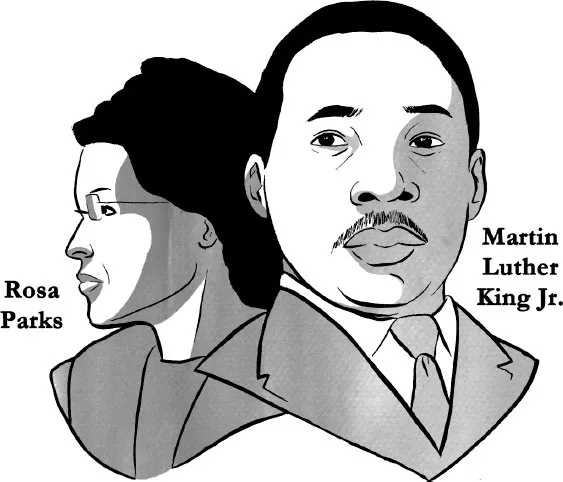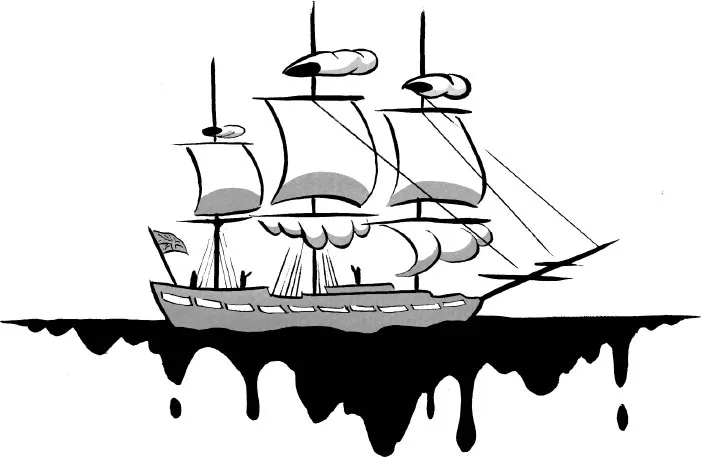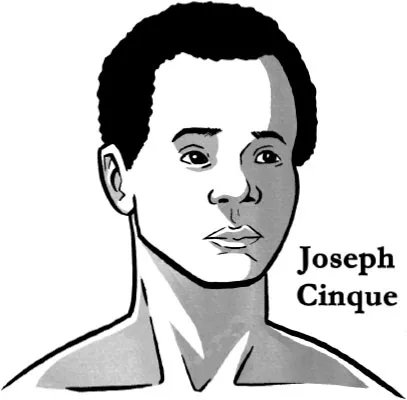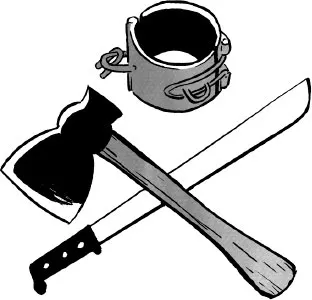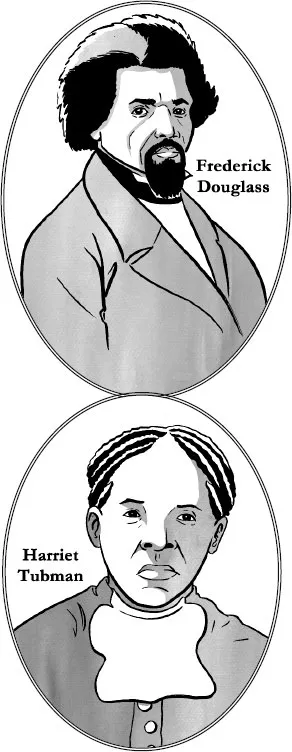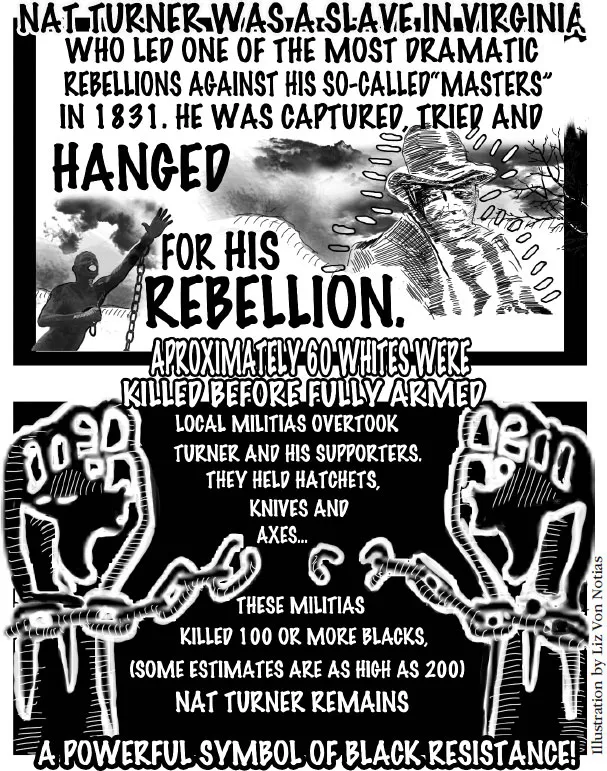![]()
Chapter 1:
THE HISTORICAL ORIGINS OF THE MODERN CIVIL RIGHTS MOVEMENT
“No human history is rootless, and we see the fullest meaning of the post–1945 events only as we dig deeper. Such probing work could take us back to the coast of Africa, to the earliest liberation struggles on the prison slave ships, and could open up the long, unbroken history of black resistance . . .”
Vincent Harding, We The People: The Long Journey Toward A More Perfect Union in EYES ON THE PRIZE CIVIL RIGHTS READER, 1991
Virtually all Americans and billions of people throughout the world know something about the American civil rights movement, often correctly viewing it as one of the most important political and moral crusades of the 20th century. The movement has entered even the most conventional U.S. history texts and is widely celebrated throughout educational, media, and political institutions in America and elsewhere. In the United States, the major highlights and figures of the civil rights movement are celebrated during African American History Month each February, with television specials, school pageants, public lectures and speeches, governmental resolutions, and a wide variety of special events throughout the nation.
Over the years, moreover, a vast civil rights literature has been created, much of it focusing on the dramatic events of African American resistance to oppression and segregation from the mid-1950s to the early 1970s. Some of this material, however, is scholarly and only marginally accessible to the general public. Moreover, many of the more accessible works focus predominately or even exclusively on this narrow historical timeframe and on widely recognized public figures like Rosa Parks and Dr. Martin Luther King, Jr.
Parks and King are iconic figures whose courage and international fame are well earned and entirely justified. But both of these majestic figures would be among the first to proclaim that they stood on the shoulders of thousands who came before them—including countless anonymous women, men, and children who put their bodies, and sometimes their lives, on the line to free their people from slavery, Jim Crow, and more subtle forms of racism. A deeper, more comprehensive history of the civil rights struggles should equally include the lesser-known stories of black liberation struggles and incorporate the efforts of the ordinary people without whom such leaders as Dr. King and others would never have emerged.
The history of the civil rights movement has a continuing vitality in the early 21st century. Its focus on racism still affecting the African American community constitutes an intrinsic feature of a broader vision of modern civil rights history. Its profound impact on other liberation movements it helped to catalyze, including the Chicano Movement, the Asian American Movement, the American Indian Movement, the Women's Movement, and the Gay Liberation Movement, is likewise a crucial part of that history. And the expressive cultural expressions emerging from the political struggles, including powerful developments in literature, music, visual art, and film, also deserve serious attention as part of a broader history of the civil rights movement in America.
The Black Holocaust, from the start of the European slave trade before 1500 to the 19th century, killed millions of African human beings and was a human tragedy of colossal magnitude. Even today, this grotesque historical reality often remains underreported beyond simplistic notions of “the slave trade.” Many Americans, including high school and university students, learn about Portuguese, British, French, Spanish, Dutch, and American slave traders who captured Africans of both genders and all ages and treated them as mere cargo, to be transported to the New World as cheaply and efficiently as possible. They also learn that these millions of people were treated barbarously and held as mere property, to be used and abused as labor in developing capitalist societies.
Less well known is the story of resistance in Africa. Many natives, understandably determined to avoid capture, torture, and enslavement, fought their oppressors as soon as the “trade” in human beings began. Many Africans on shore attacked slavers' ships while those already in captivity sometimes revolted against their captors, including at such infamous locales as the Goree Island Slave House (in contemporary Senegal). Even after being driven in chains and with whips from their African homelands, many captured people overcame major difficulties and organized revolts on the slave ships to the Americas. Slavers and their crews responded with larger forces, heavier and more lethal weapons, and even greater brutality and terror.
The 1839 revolt on the Spanish slave ship Amistad is probably the most famous example. Sengbe Pieh, known later as Joseph Cinque, led his fellow 53 African captives being transported from Havana against their captors. After gaining control of the ship and armed with machetes, the rebels killed the captain and the cook and ordered the ship returned to Africa. The U.S. Navy captured the Amistad and jailed the African rebels in New Haven, Connecticut, charging them with murder. Abolitionists in the United States rose to their defense, and former President John Quincy Adams defended them in court. The black rebels eventually prevailed and the following year returned to Africa.
Steven Spielberg's 1997 film Amistad dramatized the events, allowing this early slave ship rebellion to enter American popular culture.
All these resistance activities represent the early origins of the modern civil rights movement. In the truest sense, the civil rights movement began the moment the first Africans resisted the attempt at their capture and enslavement. A fuller glimpse into slave rebellions, in fact, is a valuable foundation for a deeper understanding of the spirit of resistance that motivated the hundreds of thousands of people, predominately but not exclusively African American, who took to the streets, commercial establishments, legislative bodies, and courts of America and finally brought a reluctant nation to an understanding of its brutal, racist past. That understanding must also extend to its continuing legacy into the present.
SLAVE REVOLTS
Human beings crave freedom. Despite the thoroughly racist view that slavery delivered African natives from barbarism to Christian “civilization,” the involuntary immigrants who were forced to labor long hours and were regularly beaten and sold as chattel property hated the oppressive conditions into which they have been forced. Thousands of slaves engaged in small individual acts of resistance that provided modest emotional relief and solace in the absence of structural change in their conditions. They worked more slowly in fields and houses than their masters wished; they damaged tools and engaged in minor acts of sabotage; they met secretly and practiced their African religions and spoke their African languages; they produced arts and crafts that indicated their zeal for liberty; and they spoke among themselves of their contempt for their white oppressors in much the same way that their descendants in the South during the 1930s, 1940s, and 1950s spoke disparagingly about their white overseers and employers even while maintaining a surface servility in their presence. All of that reflects the underlying attitudes that formed the roots of the modern civil rights movement of the late 1950s onward.
In addition, opposition to slavery took the form of individual and group escapes from bondage to freedom in the North or to Canada. From single departures to organized mass escapes through the Underground Railroad, these activities also reflected the resistance spirit that has always motivated African American freedom struggles.
Iconic figures including Frederick Douglass and Harriet Tubman, after they themselves fled from bondage, became major leaders in the abolitionist movement that played such a major role in the ultimate ending of America's most shameful historical chapter.
Yet the leading expression of black resistance to oppression in the United States was organized slave rebellions, and those efforts should be viewed as the chief early antecedents of later 19th century and 20th century civil rights activities. American slavery was always characterized by violence, mostly by white masters against their captives. This intolerable arrangement generated fierce opposition, often resulting in counter-violence directed against the oppressors.
Historians have documented slave rebellions for many decades. A classic 1943 work by radical historian Herbert Aptheker, American Negro Slave Revolts, documented approximately 250 slave revolts from the 1600s to the end of the Civil War. Other historians dispute his figures, asserting that some were minor incidents that were swiftly suppressed. The ultimate number and the specific gravity of the rebellions, however, are far less significant than the underlying spirit of resistance that the slaves revealed in captivity. Aptheker's work was a major catalyst for scholars seeking to understand history from the vantage point of the oppressed rather than from that of the oppressors.
The most widely recounted slave revolts in U.S. history are the Denmark Vesey uprising in Charleston, South Carolina, in 1822 and the Nat Turner rebellion in Southampton County, Virginia, in 1831. Vesey was a free black man who despised the institution of slavery, with all its attendant cruelty and viciousness. He incited an insurrection, calling on slaves to rise up and liberate the city. Two slaves betrayed Vesey and his confederates, leaking the plot to authorities. Vesey was arrested along with numerous others. In the end, he was convicted and hanged along with 34 others.
Nat Turner, a deeply religious ...
